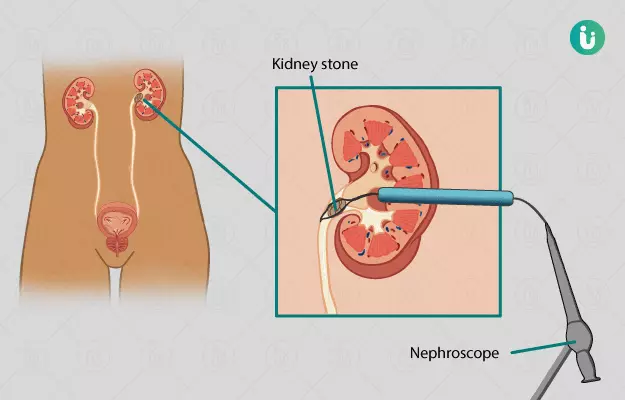Summary
Percutaneous nephrolithotomy (PCNL) is a minimally invasive procedure to remove kidney stones that are either too large or cannot be removed by other methods such as shock wave lithotripsy (SWL). In SWL, shock waves are given from outside to break the stone so it can pass on its own. Pregnant women and people with tumour or infections of the urinary tract cannot undergo this procedure.
The surgery requires the administration of general anaesthesia. A urologist performs the whole procedure under the guidance of x-ray imaging. The doctor makes a small incision or cut in the skin of your back and inserts a telescope to look at the stone, break it into pieces and remove them from the kidney. The surgery lasts for three to four hours and is followed by one to two days of hospitalisation. You may have to rest for up to two weeks before being able to return to work.






































